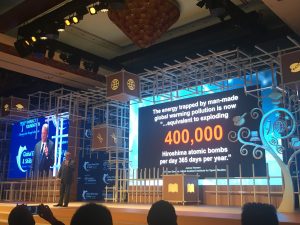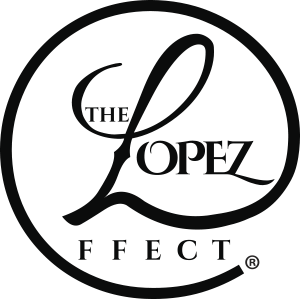25 Mar Saving Planet Earth from our Classrooms: 5 Practical Tips on Collaboration, Critical Thinking, and Creating Connections

Credit: www.posterlounge.co.uk
As a member of the Varkey Foundation’s Teacher Ambassador Programme, I had the privilege of hearing Former US Vice President Al Gore’s keynote address on the future of our world and existential threat posed by climate change, at the Global Education Skills and Forum on March 18, 2018. While I sat through the presentation, I thought I knew and understood global warming and the implications that it has on our mother Earth. But eventually I was gripped with fear as I watched videos and read slides that captured facts referencing our daily destructive behaviors impacting our planet. At that moment I had to be completely honest. I was more familiar with the use of the buzz words, “greenhouse effect,” “global warming,” “climate change” and “going green”. These phrases are constant in media coverage but they didn’t help me to understand the urgency created by the United Nations’ SDG 13 that requires action for the survival of our well-being on this planet.

Being a leader with great influence on what our children learn, it was evident that I didn’t know enough and had not researched enough. This forced me to wonder how would my scholars at Mott Hall Bridges Academy care enough about the future of our Earth? I’m sure there are plenty of people who have had this same experience, but there should never be shame in not knowing. Once you do, it’s important to start doing! With that said, I decided to arm myself with the information, which I discussed with my teachers to ensure that we were doing our best to educate our children.
- Get Connected: My fellow Global Teacher Prize Finalist and co-author of “Teaching in the Fourth Industrial Revolution”, has created a platform for teachers and students to participate in project based activities that bring about awareness and cultivates advocacy regarding climate change. Notable individuals like the Dahli Lama and various dignitaries from around the world have applauded Koen for his work, which has participants from around the world, including those that are disadvantaged. This is a fun and practical way of creating global citizenship that will have positive implications on the future.
Get started, join today? https://www.climate-action.info/
- Get the Info: Google can give you access to thousands if not millions of sites that reference climate change, but the key is finding the ones that are engaging and easily understood by both adults and children. I have found that National Geographic has great resources and this link to a 3-minute video is easily accessible by any age group.
The video can be used to build critical thinking skills and ask encourage any audience to ask “why” and “how” can we create solutions that will improve our lives here on planet Earth.
- Get the Debate: The Paris Agreement is a framework agreed upon by 197 countries to take action to decrease carbon emissions to lessen the threat of climate change. It calls for global temperature to be decreased by 2 degrees Fahrenheit and established a fund of $100 billion to support disadvantaged countries in their effort to bring about change as well.
This video is a great at breaking down climate change, the Paris Agreement, and the both the positive and negative implications. It is great for young people to watch and actual debate who is responsible for holding countries accountable to abide by the agreement or whether this is an effort that should participate in.
- Get Equal: If we are going to talk about environmental protection, then we should also include careers in sustainability and the importance of giving access to females, in a male dominated space. When we integrate college and career readiness in an authentic matter, our young people not only learn about the content, we expose them to opportunities and possibilities for their future. This panel discussion in 2017 in celebration of 40 years of Rhodes Women Scholars is a great way of discussion who is included in the conversation versus those who are not and why we must advocate for gender equality and diversification.
- Get Partnered: I strongly believe that education is a community issue, therefore we need to partner with organizations and individuals who can provide real-world connections and supplement the education experience. Consider reaching out to your local Department of Education Protection, delegate at the United Nations, “Green” related companies, and local colleges or universities to partner in curriculum development. Request a tour or secure a guest speaker. This offers a rich experience to learning that extends beyond the classroom.
I hope that these tips help you as they have myself to better prepare my scholars for a better future. Try them out; the best part is that they won’t cost you anything.

